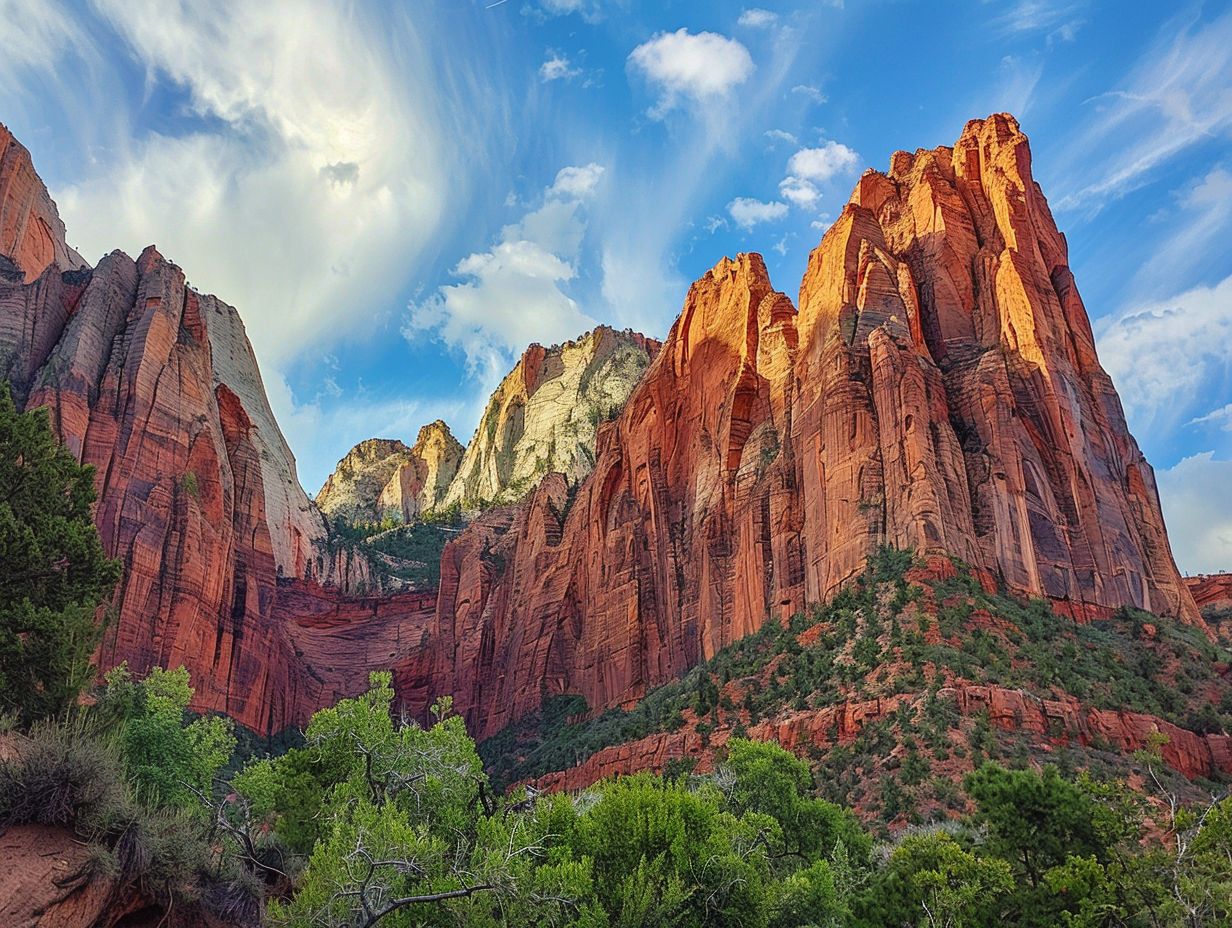Zion National Park, located in southwestern Utah, is a popular destination for outdoor enthusiasts year-round. However, the winter season offers a unique and less crowded experience, with temperatures that are relatively mild compared to other parts of the country. From weather conditions to wildlife sightings, this blog post will guide you through the wonders of Zion National Park Snow.
Weather and Conditions in Zion National Park Snow
Winter in Zion is generally wet, with a mix of rain, snow, and mixed precipitation. At lower elevations, snow melts quickly, but at higher elevations, it can persist, especially in shaded areas. Visitors should be prepared for varying temperatures and conditions, and consider bringing “over the shoe” traction devices for hiking.
The average temperatures in Zion National Park during the winter months are:
| Month | Average High | Average Low |
|---|---|---|
| December | 54°F (12°C) | 29°F (-2°C) |
| January | 52°F (11°C) | 27°F (-3°C) |
| February | 57°F (14°C) | 30°F (-1°C) |
It’s important to note that these are average temperatures, and the actual conditions can vary significantly depending on the weather patterns and elevation.
Roads and Trails in Zion National Park Snow

US Hwy 9, the main access to Zion National Park, is usually clear of snow in the Zion Canyon area, but may have snowpack in higher elevations. The Kolob Canyons Road and Kolob Terrace Road are subject to temporary closures due to snow. Some trails, like Angels Landing, can be snowy and icy during winter months, so it’s essential to check the weather and local snow conditions before heading out.
Visitors should be aware of the following road and trail conditions in Zion National Park during the winter:
- US Hwy 9 is generally clear of snow in Zion Canyon, but may have snowpack in higher elevations.
- Kolob Canyons Road and Kolob Terrace Road are subject to temporary closures due to snow.
- Some popular trails, like Angels Landing, can be snowy and icy, requiring extra caution and traction devices.
- It’s crucial to check the latest weather and snow conditions before planning your hikes.
Wildlife in Zion National Park Snow
Despite the winter conditions, Zion National Park is still home to a diverse array of wildlife. Visitors may spot mule deer, songbirds, hawks, eagles, rabbits, and other small mammals during their winter visit. The park’s lower elevations often provide more opportunities for wildlife sightings, as the animals seek out areas with less snow cover.
Shuttle Operation in Zion National Park Snow
The Zion Park shuttle does not operate during the winter months, allowing visitors to drive their cars into Zion Canyon and explore the majestic scenery at their own pace. This can be a significant advantage for those seeking a more peaceful and less crowded experience.
Crowds and Solitude in Zion National Park Snow
Winter is the least busy time of year to visit Zion National Park, offering a more serene and peaceful experience compared to the crowded summer months. Visitors can enjoy the park’s iconic landscapes, such as the towering sandstone cliffs and the Virgin River, without the large crowds that are typical during the peak season.
Photography in Zion National Park Snow
Winter in Zion provides unique photographic opportunities, with snow-dusted landscapes and sandstone formations highlighted by the white snow. The reduced crowds and the park’s natural beauty create an ideal setting for capturing stunning winter scenes.
In conclusion, visiting Zion National Park during the winter months offers a peaceful and less crowded experience, with mild temperatures and the possibility of snowfall. By being prepared for varying weather conditions, checking road and trail statuses, and taking advantage of the park’s winter wildlife and photographic opportunities, visitors can enjoy a truly unique and memorable experience in this natural wonder.

